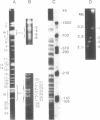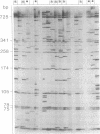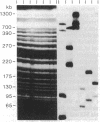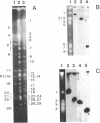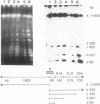Abstract
We have used a modified linking clone strategy and pulsed-field gel electrophoresis to derive a map of the 29 Sfi I and 4 Not I sites in the 10 million base pair genome of the protozoan parasite Theileria parva. This was achieved in the absence of classical genetic information. The map reveals four chromosomes. Several genes, including those for parasite antigens, have been located on the map, as has the single locus carrying the major repetitive sequence in this organism. The map forms the basis for a study of sexual recombination in T. parva, which will be of importance in the application of present methods of immunization. Aspects of the mapping strategy may be useful in the study of other small eukaryotic genomes.
Full text
PDF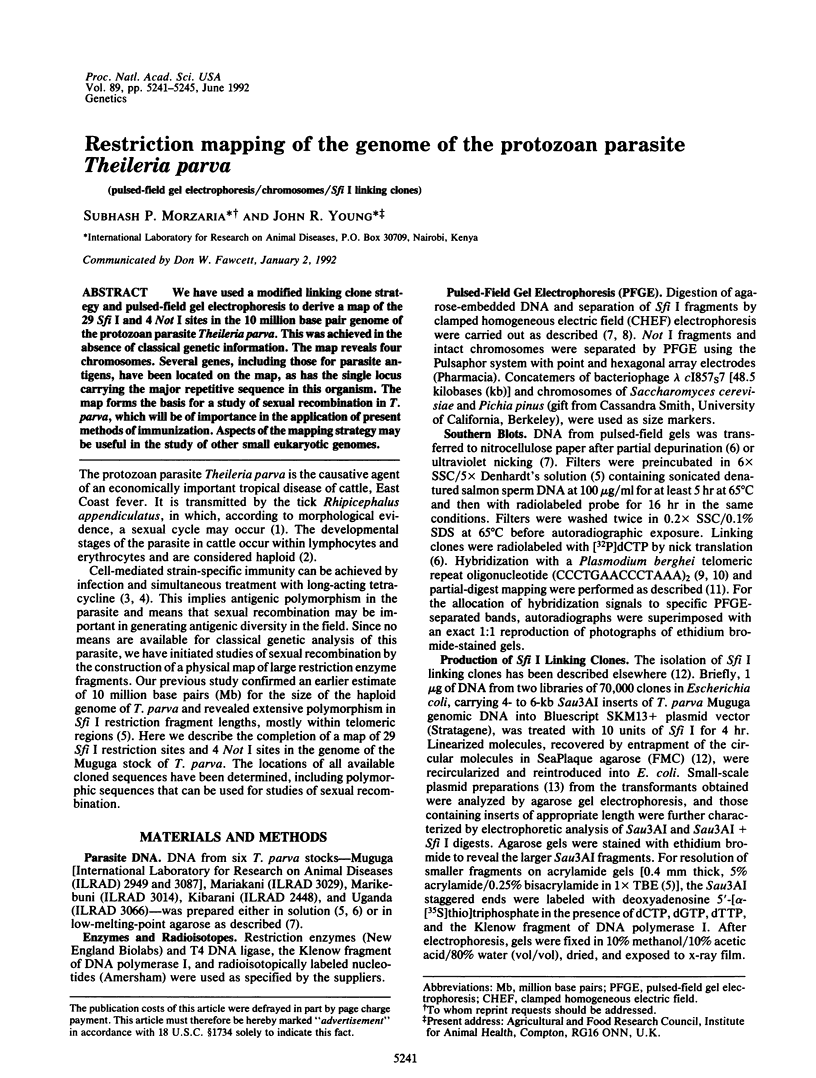
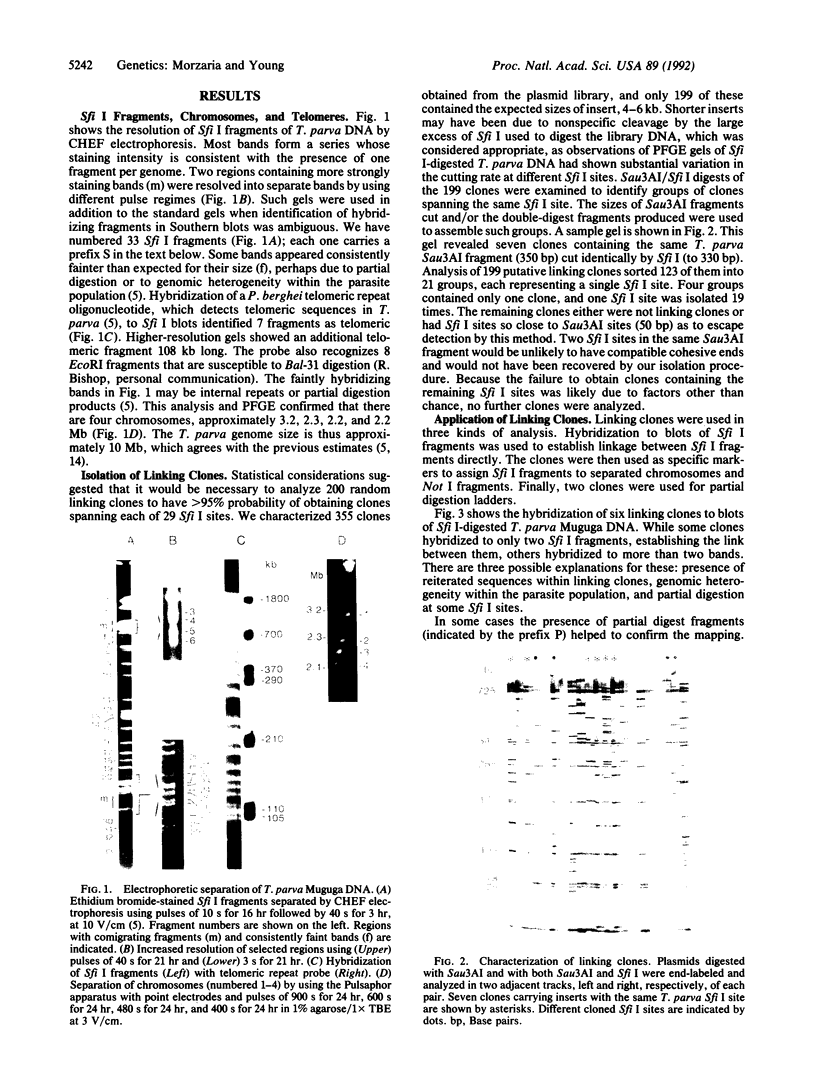
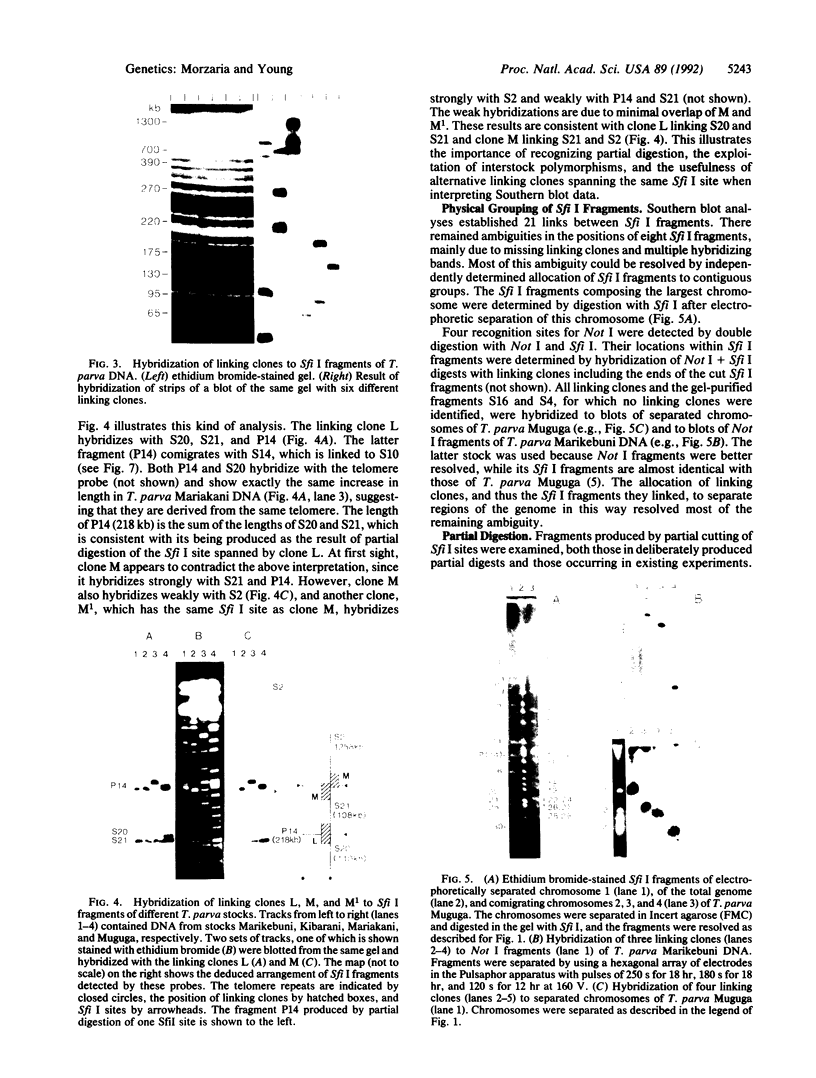
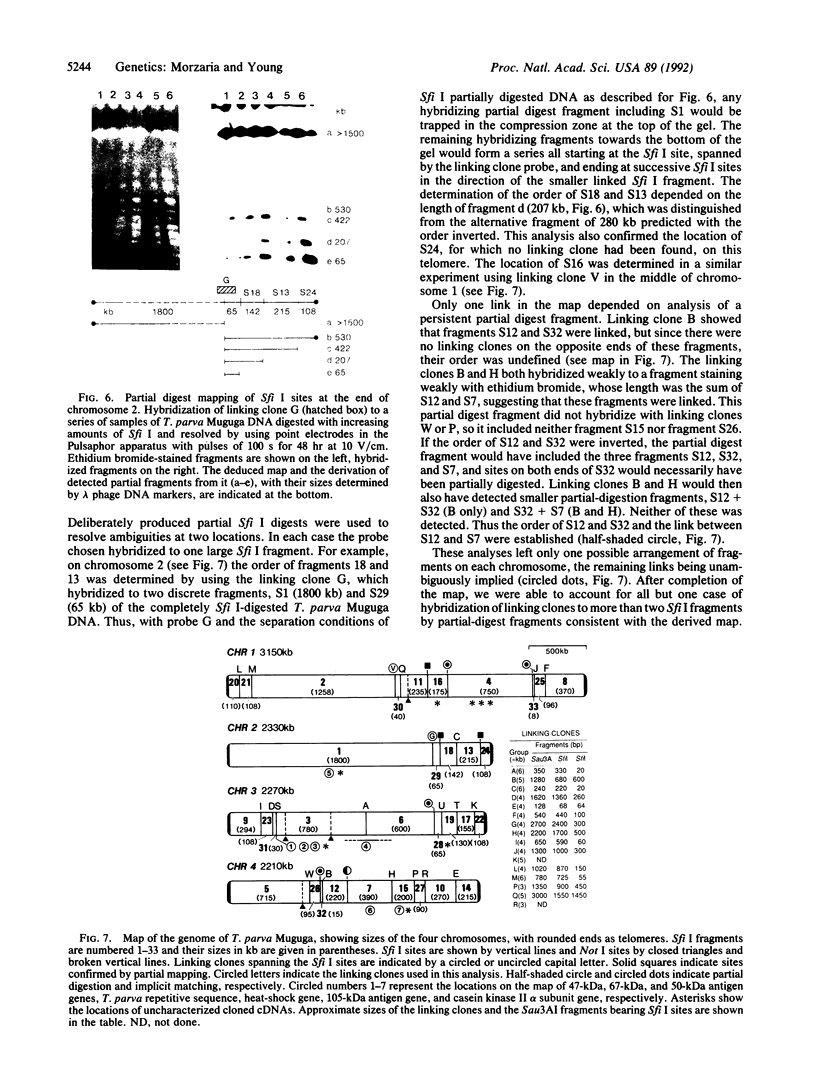
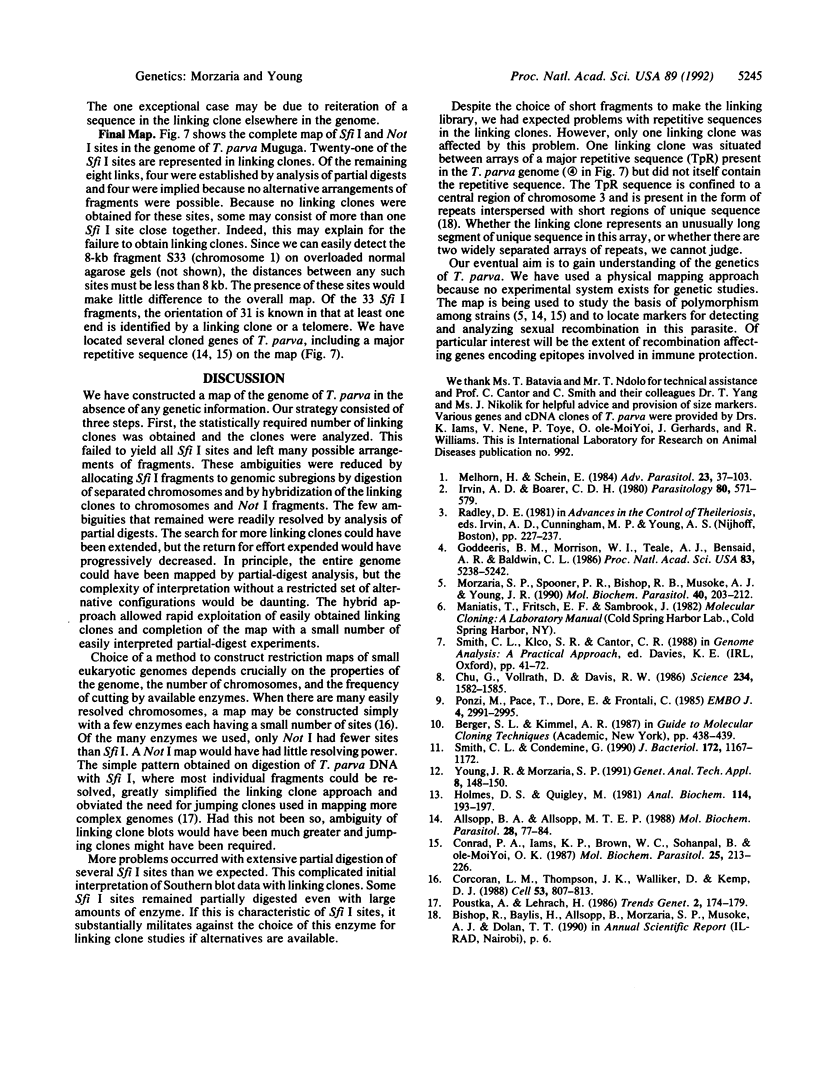
Images in this article
Selected References
These references are in PubMed. This may not be the complete list of references from this article.
- Allsopp B. A., Allsopp M. T. Theileria parva: genomic DNA studies reveal intra-specific sequence diversity. Mol Biochem Parasitol. 1988 Feb;28(1):77–83. doi: 10.1016/0166-6851(88)90183-1. [DOI] [PubMed] [Google Scholar]
- Chu G., Vollrath D., Davis R. W. Separation of large DNA molecules by contour-clamped homogeneous electric fields. Science. 1986 Dec 19;234(4783):1582–1585. doi: 10.1126/science.3538420. [DOI] [PubMed] [Google Scholar]
- Conrad P. A., Iams K., Brown W. C., Sohanpal B., ole-MoiYoi O. K. DNA probes detect genomic diversity in Theileria parva stocks. Mol Biochem Parasitol. 1987 Oct;25(3):213–226. doi: 10.1016/0166-6851(87)90085-5. [DOI] [PubMed] [Google Scholar]
- Corcoran L. M., Thompson J. K., Walliker D., Kemp D. J. Homologous recombination within subtelomeric repeat sequences generates chromosome size polymorphisms in P. falciparum. Cell. 1988 Jun 3;53(5):807–813. doi: 10.1016/0092-8674(88)90097-9. [DOI] [PubMed] [Google Scholar]
- Goddeeris B. M., Morrison W. I., Teale A. J., Bensaid A., Baldwin C. L. Bovine cytotoxic T-cell clones specific for cells infected with the protozoan parasite Theileria parva: parasite strain specificity and class I major histocompatibility complex restriction. Proc Natl Acad Sci U S A. 1986 Jul;83(14):5238–5242. doi: 10.1073/pnas.83.14.5238. [DOI] [PMC free article] [PubMed] [Google Scholar]
- Holmes D. S., Quigley M. A rapid boiling method for the preparation of bacterial plasmids. Anal Biochem. 1981 Jun;114(1):193–197. doi: 10.1016/0003-2697(81)90473-5. [DOI] [PubMed] [Google Scholar]
- Mehlhorn H., Shein E. The piroplasms: life cycle and sexual stages. Adv Parasitol. 1984;23:37–103. doi: 10.1016/s0065-308x(08)60285-7. [DOI] [PubMed] [Google Scholar]
- Morzaria S. P., Spooner P. R., Bishop R. P., Musoke A. J., Young J. R. SfiI and NotI polymorphisms in Theileria stocks detected by pulsed field gel electrophoresis. Mol Biochem Parasitol. 1990 May;40(2):203–211. doi: 10.1016/0166-6851(90)90042-k. [DOI] [PubMed] [Google Scholar]
- Ponzi M., Pace T., Dore E., Frontali C. Identification of a telomeric DNA sequence in Plasmodium berghei. EMBO J. 1985 Nov;4(11):2991–2995. doi: 10.1002/j.1460-2075.1985.tb04034.x. [DOI] [PMC free article] [PubMed] [Google Scholar]
- Smith C. L., Condemine G. New approaches for physical mapping of small genomes. J Bacteriol. 1990 Mar;172(3):1167–1172. doi: 10.1128/jb.172.3.1167-1172.1990. [DOI] [PMC free article] [PubMed] [Google Scholar]
- Young J. R., Morzaria S. P. Agarose entrapment method for the production of SfiI linking library for Theileria parva. Genet Anal Tech Appl. 1991 Aug;8(5):148–150. doi: 10.1016/1050-3862(91)90023-k. [DOI] [PubMed] [Google Scholar]



